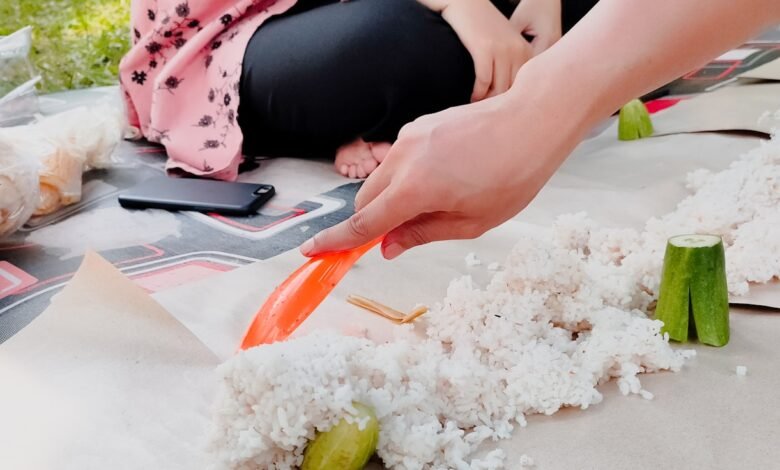Guide to Indonesian Cuisine

1. Popular Ingredients and Flavors
Indonesian cuisine balances sweet, spicy, salty, and sour flavors, often in the same dish. Key ingredients include:
- Spices and Aromatics: Ginger, galangal, turmeric, lemongrass, and lime leaves give dishes their characteristic warmth and depth.
- Chili Peppers: Spiciness is a hallmark, and dishes often use sambal, a chili-based condiment.
- Coconut: Used in forms like coconut milk, grated coconut, and coconut oil.
- Peanut: Ground peanuts appear in sauces, most famously in Gado-Gado (a vegetable salad with peanut sauce).
- Rice: A staple across the country, served alongside most meals.
2. Regional Specialties
Each region of Indonesia has distinct culinary traditions that are a must-try:
- Sumatra: Known for Rendang, a slow-cooked beef dish simmered in coconut milk and spices, originating from the Minangkabau people.
- Java: Sweet soy sauce (kecap manis) flavors dishes like Nasi Goreng (fried rice) and Sate (skewered grilled meat).
- Bali: Famous for Lawar, a minced meat and vegetable dish.
- Sulawesi: Known for seafood, particularly Coto Makassar, a rich beef soup with peanuts.
- Nusa Tenggara: Home to distinctive dishes like Se’i, a smoked meat specialty from East Nusa Tenggara.
3. Iconic Dishes
Several iconic Indonesian dishes are recognized worldwide:
- Nasi Goreng: Often called Indonesia’s national dish, it’s a savory fried rice seasoned with kecap manis, shallots, garlic, and topped with a fried egg.
- Satay (Sate): Skewered meat grilled to perfection, served with spicy peanut sauce. It varies by region, with each offering its own twist.
- Bakso: A popular street food, these meatballs are typically served in broth with noodles, vegetables, and a splash of sambal.
- Gado-Gado: A salad of blanched vegetables, boiled eggs, and tofu, topped with a creamy peanut sauce.
- Rendang: A deeply flavorful and tender beef dish slow-cooked in a rich coconut and spice mixture.
4. Street Food Culture
Indonesian street food is an integral part of daily life. Markets and food stalls, called warungs, offer a range of dishes at affordable prices:
- Martabak: A thick stuffed pancake that can be savory or sweet.
- Pempek: Fish cakes from Palembang, often served with a sweet and sour sauce.
- Kerak Telor: A Jakarta specialty, it’s a crispy omelet made with glutinous rice and topped with fried shallots and coconut.
- Es Campur: A refreshing dessert drink with shaved ice, sweet syrups, fruit, jelly, and sometimes condensed milk.
5. Desserts and Sweets
Indonesian desserts highlight coconut, rice, and palm sugar:
- Klepon: Sweet rice cakes filled with palm sugar, coated in grated coconut.
- Dadar Gulung: Rolled green pancakes filled with sweet coconut.
- Es Teler: A sweet mix of coconut, avocado, jackfruit, and condensed milk served with shaved ice.
6. Dining Etiquette and Customs
Indonesian meals are often communal, with food shared family-style. Some key points to remember:
- Right Hand Use: Always use your right hand when eating, as it is considered polite.
- Portion Size: Take modest portions initially; it’s customary to go for seconds rather than overloading your plate.
- Respect for Offerings: In Bali, small offerings may be placed near food stalls as a sign of gratitude, so be mindful not to disturb them.
Conclusion
Exploring Indonesian cuisine is a sensory adventure that immerses you in the country’s rich cultural and regional diversity. From the fiery flavors of sambal to the soothing richness of coconut-based dishes, there’s something for every palate. Each dish tells a story of Indonesia’s history, tradition, and the harmonious blend of ingredients that make its food truly unique.



